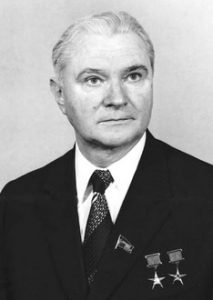Valentin Petrovich
Glushko
1908-1989

Valentin Petrovich Glushko was one of the pioneers of rocket and space technology, the founder of the domestic rocket engine building, the designer of space systems, the creator of many rocket engines for ballistic missiles and launch vehicles, a member of the Council of Chief Designers for coordinating the creation of rocket and space technology, academician of the USSR Academy of Sciences, Doctor of Technical Sciences, twice Hero of Socialist Labor. He graduated from Leningrad State University in 1929. He began his career at the GDL (Gas Dynamics Laboratory in Leningrad) as a rocket scientist, where he created the first ORM-1-ORM-52 experimental liquid rocket engines in Russia, then worked at the RNII (Jet Research Institute). In 1946-1974 he was the chief designer of OKB-456 (now NPO «Energomash» named after V.P. Glushko) in 1946-1974, where many liquid rocket engines were created. Under the leadership of V.P. Glushko powerful liquid propellants on low-boiling and high-boiling fuels were developed, used in most combat missiles and launch vehicles. In 1974-1989 he headed the NGO «Energia». He was a General Designer of the reusable rocket and space complex Energia-Buran (1988), Chairman of the Council of Chief Designers. He carried out technical management and coordination of the work of enterprises and organizations of the rocket and space industry. Valentin Glushko is the author of many scientific papers on rocket engines and fuels. He was a full member of the International Academy of Astronautics, twice Hero of Socialist Labor (1956, 1961), laureate of the Lenin (1957) and State (1967, 1984) Prizes of the USSR. He was awarded five Orders of Lenin, a Gold Medal named after K.E. Tsiolkovsky Academy of Sciences of the USSR (1958), other orders and medals. He was awarded the highest award of the International Aviation Federation – the diploma of P. Tissandier (1967). A crater on the visible side of the moon, minor planet No. 6357, NPO «Energomash», streets, an airplane and monuments have been named after him.
Address: Moscow, Kudrinskaya pl., 1

